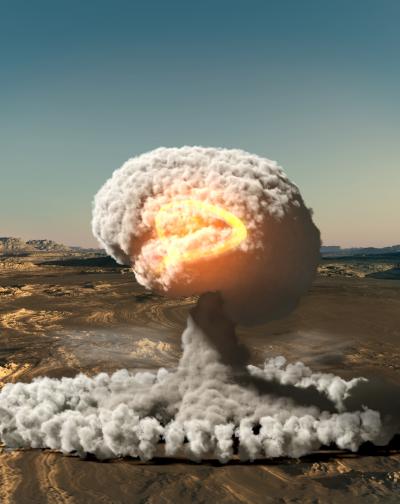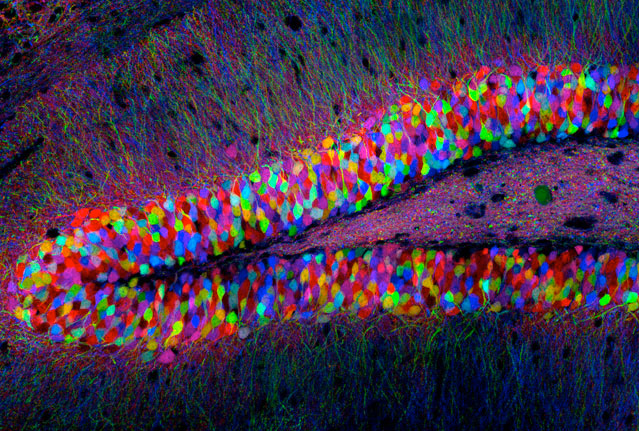
Radioactive carbon-14 atoms released by atomic bomb tests are helping scientists determine new neurons produced in the brain (credit: Spalding et al./Cell)
A study in the journal Cell reveals that a significant number of new neurons in the hippocampus — a brain region crucial for memory and learning — are generated in adult humans.
“It was thought for a long time that we are born with a certain number of neurons, and that it is not possible to get new neurons after birth,” says senior study author Jonas Frisén of the Karolinska Institute.
But no one could check this, because there was no way to date the birth of neurons in humans.
Carbon-dating neurons
To do that, Frisén and his team developed an innovative method for dating the birth of neurons that takes advantage of the elevated atmospheric levels of carbon-14, a nonradioactive form of carbon, caused by above-ground nuclear bomb testing more than 50 years ago.
Since the 1963 nuclear test ban treaty, atmospheric levels of “heavy”14C (carbon-14) have declined at a known rate.
When we eat plants or animal products, we absorb both normal and heavy carbon at the atmospheric ratios present at that time, and the exact atmospheric concentration at any point in time is stamped into DNA every time a new neuron is born. Thus, neurons can be “carbon dated” in a similar way to that used by archeologists.

To count neurons in the hippocampus, Swedish researchers injected a substance that made them glow in different colors to distinguish non-neuronal cells from neurons. Shown here: an image of a transgenic mouse hippocampus (credit: Nikon Small World Gallery)
The researchers measured the carbon-14 concentration in DNA from the hippocampal neurons of deceased humans. They found that 1,400 new neurons in the dentate gyrus.area are added each day — 1.75% per year — during adulthood, and that this rate declines only modestly with age, suggesting that adult hippocampal neurogenesis may contribute to human brain function.
No comments:
Post a Comment